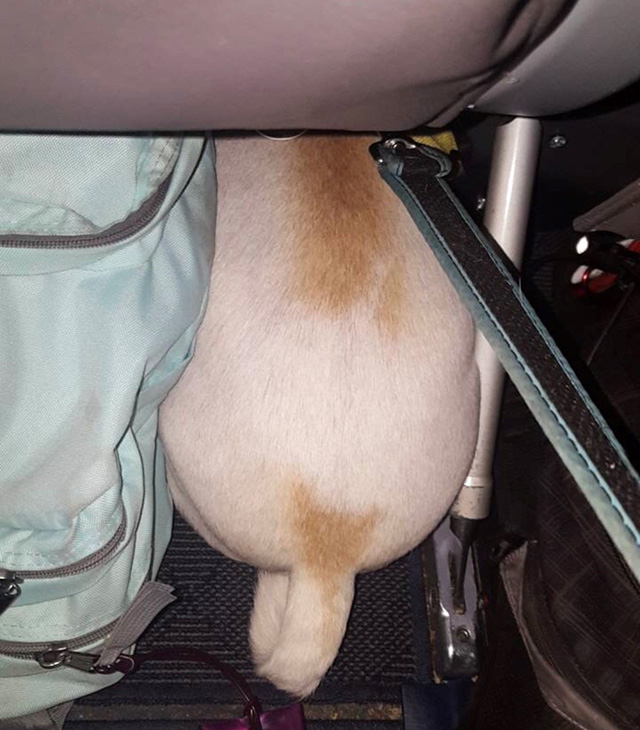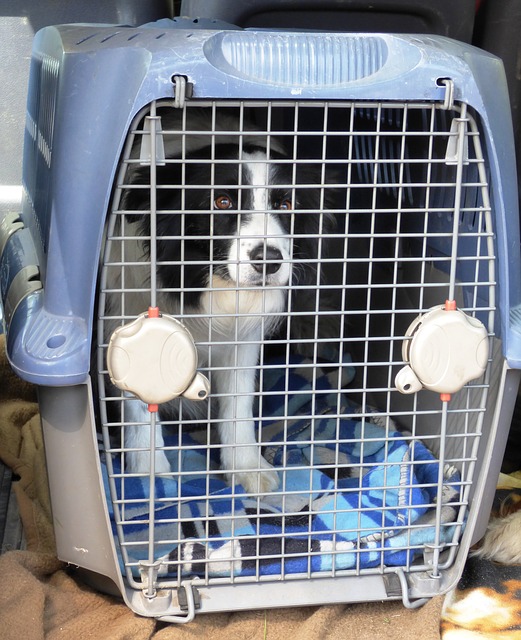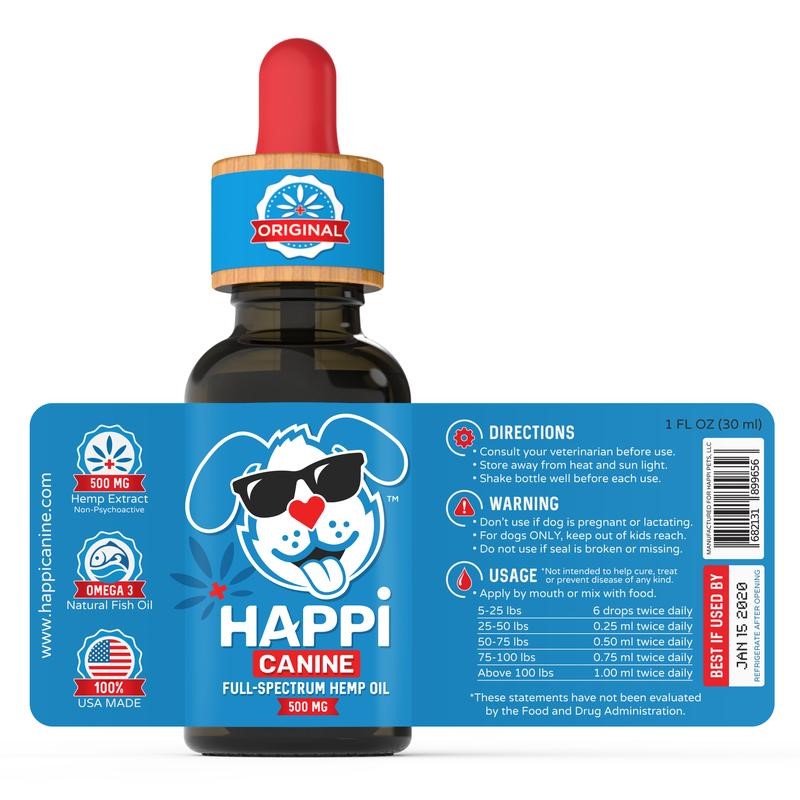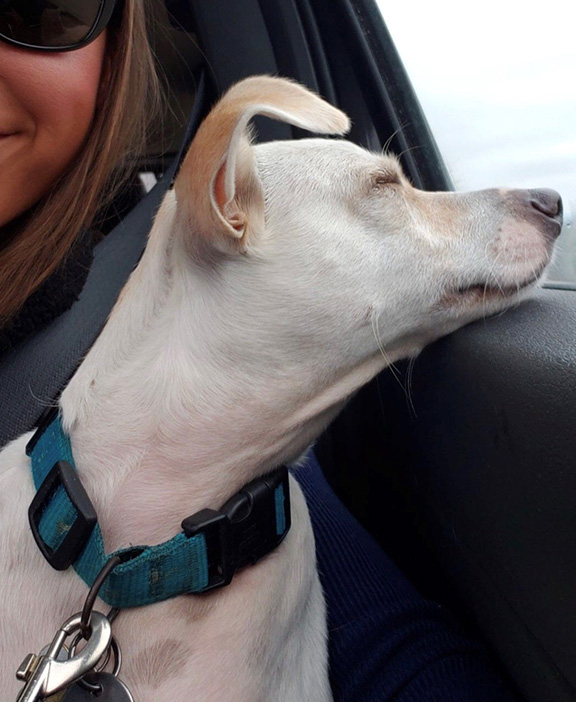
Traveling with dogs is a hot topic these days. It seems like we are seeing more and more dogs in airports and transit stations every time we travel.
I’m no expert, but I’m fairly certain this trend can be attributed to a handful of key reasons:
- An increasing number of people have the ability to telecommute – and be away from home longer (myself included).
- The cost of boarding a dog for a long period of time is insane!
- Less people are having kids these days, which means more/longer vacations.
If you’re anything like me, you see your dog as a precious member of the family.
My wife and I both have the flexibility to work remote, hence we like to take extended trips to see friends and family throughout the year. As we would never dream of leaving our pup behind, we’ve definitely learned the ins and outs of traveling with dogs (some of them we learned the hard way).
Here are five crucial tips to help make sure your time in transit goes off without a hitch!
1. Invest in a Good (Airline Approved) Crate

An airplane-friendly crate is an investment you should make as long in advance before your trip as possible. Transit centers can be scary places for dogs, especially smaller ones. If you can get your dog accustomed to a crate, they will see it as their “safe place” and the experience will (ideally) be a lot less intimidating for them.
If you are traveling with your dog in cargo, most major airlines require a specific crate based on the size of your dog – as well as a water/food bowl. Or, if your pup meets the requirements to ride in the cabin, there are usually specific rules for which carrying totes you can use.
Be sure you take the time to thoroughly research the airline’s policies. Getting turned back at the airport would be a giant bummer!
2. Be Smart About Bathroom Breaks
Whether it’s in an airport, bus depot, train station, or anywhere else, seeing dogs relieve themselves in an undesignated area is fun for no one. Not only will onlookers question your dog ownership abilities, it gives everyone who travels with their pup a bad name. Believe me, I’ve been on both sides of this ugly coin…
To reiterate, transit stations are stressful places. It’s relatively common for dogs to relieve themselves when anxiety is running high. When traveling, the key is to make sure there is absolutely nothing in the tank if a situation arises.
Once you book your trip and have a set itinerary, you are smart to tweak your dog’s bathroom schedule so they do their business as close to your home departure time as possible. This might take a few days – or a few weeks – to nail down. After all, dogs are creatures of habit.
Now, even if you’ve adjusted their schedule, there is ALWAYS the risk of an accident. It’s always good to pack light when traveling with dogs. However, be sure you are prepared with bags, cleaner, and a hefty wad of paper towels.
In terms of the cleaner, don’t forget that it needs to be in a travel-sized container. Personally, I fill up an old Head & Shoulders 3 oz. bottle with Nature’s Miracle and keep it in a side pouch on my backpack.
Take my word for it; you NEVER want to be “that person” when traveling with dogs. The looks and headshakes you get when your dog goes to the bathroom in the middle of a transit station are the absolute worst!
3. Research ALL Pet Regulations Far in Advance
In addition to a regulation carrier, there are all kinds of rules you need to follow, especially when it comes to air travel with dogs.
While it can vary from airline-to-airline, it’s common that dogs need to have a physical within 10 days of the flight. You need to have signed paperwork from your vet with proof that they are up-to-date on vaccines and do not have any diseases/parasites.
If the dog flies in cargo, you typically need to provide food, water, and a list of instructions for the crew in case of any delays or cancellations.
Airlines are cracking down quite a bit with their pet policies – especially with the recent scandals. Getting turned back at the counter because you didn’t do your due diligence is the last thing you want.
4. Medicate Wisely
Lots of dogs have problems with anxiety, especially the rescues. Thrusting them into a crowded transit station is oftentimes one of the worst things you can do for this. There are plenty of harmless ways to relax an anxious dog – like a special vest or a calming coat.
But unfortunately, many pooches need something more. As a necessary evil when traveling with dogs, a lot of owners turn to doggy sedatives to help calm their nerves.
While sedatives can definitely do the trick, they don’t come without risk.
I remember asking a vet tech about it before the first trip with my dog and she was mortified. She then went on to tell me that giving sedatives to a super anxious dog can potentially cause their heart to stop! Yikes!
Even though this is obviously the absolute worst case scenario, her words were enough to deter me. I won’t say that you shouldn’t use sedatives when traveling with dogs, but you might be wise to look into other remedies based on your pup’s personality.
We’ve had a great deal of luck with CBD oil.
We recently switched to a brand called Happi Canine.

This particular CBD product serves two major functions.
One, the CBD works to promote a natural sense of calm in a dog’s nervous system.
Two, Happi Canine is made with omega-3 fish oil, which over time, can help to reduce shedding. Excessive shedding is a very common side effect of anxiety in dogs. When traveling with your furry friend, the goal is to minimize the evidence as much as possible.
Keep in mind, whatever medication you give your dog, you don’t want their first experience with it to be on the day you are traveling. If you go the sedative route, give them the meds at least once or twice in the weeks leading up to the trip (and start small).
If you give your pup CBD, do your research on the product and read the instructions carefully. Make sure you start them with enough time to get used to the effects!
5. Take Some Practice Rounds

Unfortunately, you can’t sit your dog down and explain that they need to navigate through a busy transit station on X date – or hand them step-by-step instructions.
The best thing you can do is try to emulate the travel experience as much as possible before the trip. This will more than likely require some creativity on your end, especially if your taking your dog on an airplane.
For example, our dog went in cargo for his first plane ride. To replicate the experience, we put him in his crate and went to a friend’s place (who hadn’t met our dog yet). We then brought the crate inside, said our fake goodbyes, and walked out. From here, our friend put the crate in the back of his truck and drove around the block a few times.
The goal was to gauge his reaction to us leaving him in an unfamiliar setting, then having a stranger haul him away. Fortunately, he handled it like a champion! This can probably be attributed to him being used to his crate.
If you are taking your pup in the cabin, try putting him/her on the floor in your car for a short road trip. You ideally want them to get used to being in a cramped space for an extended period of time without going crazy.
You don’t want to throw your dog into the deep end of traveling right off the bat. Even when it comes to the real thing, you are smart to take baby steps. In terms of flying with dogs, start with a shorter flight if possible. A transcontinental trip would definitely not be the best way to “ease” your dog into the travel experience.
Over to You
Traveling with dogs is very rarely a cake walk – no matter how many times you’ve done it.
In my experience, the first three to four times were the worst. While it still isn’t exactly easy, it’s manageable. At the end of the day, transit stations are designed for humans.
My hope is that the major transportation companies (especially airlines) one day fully embrace the trend of pet travel with designated flights. Wishful thinking, but I won’t rule it out!
Hopefully this post has given you a good idea of where to start in the process of traveling with dogs! Always remember the 5-Ps – Prior Planning Prevents Poor Performance!




1 Comment